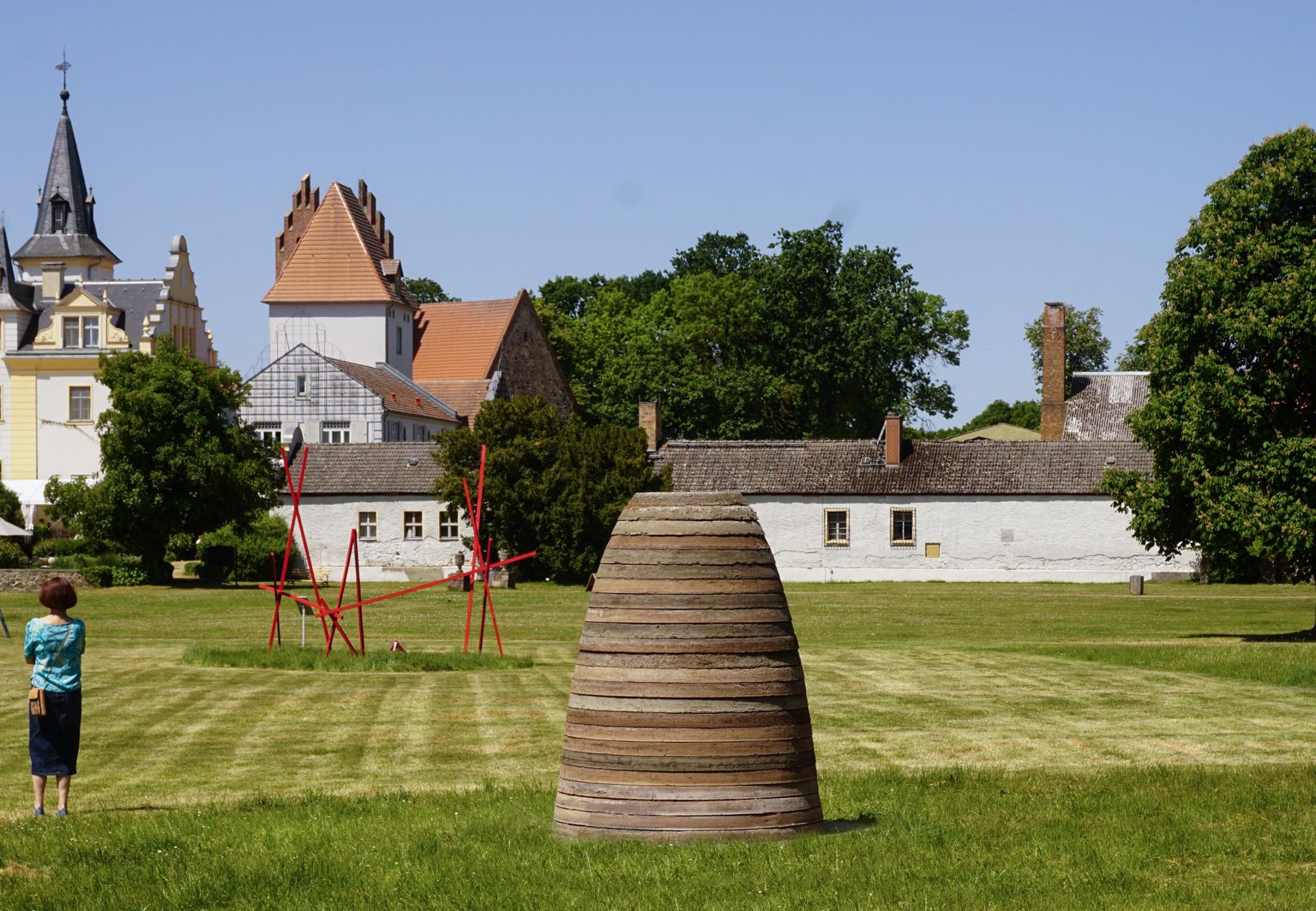The dome-like scultpure in Situ was created during our 10 day artist-residency at DKB Foundation at Schloss&Gut Liebenberg. Our idea for this project was to make use of the locally available resources such as field stone, ash and old brick stones and test it as building material in order to create a work for the site with the materials from the site. We also experimented with production processes in order to avoid the need for additional materials for the molds and created tools that allow for circular extrusion. The interplay of the materials and the production method results in a dome-like sculpture that brings the principle of corbled domes into the present time. The installation In situ was built in the middle of the castle garden from 24 individual rings stacked on top of each other.



- IS.2: Ring before assembly
- IS.3: Surface detail
- IS.4: Total view
The guiding principle of the project is the construction phenomenon of Kragkuppelbauten (engl. corbeled domes), which originated about 200 years ago in different countries such as Morocco,Spain, Iceland, Croatia or Oman. It is a simple construction form that developed in different regions for practical reasons. By means of this technique, in which locally collected stones were piled up in dry construction to form huts, two problems were solved at the same time: the fields used for cultivation were freed from excessively occurring stones and at the same time usable shelters were created from them.



- IS.5.1-3: Renate Löbbecke, „Kragkuppelbauten“, 2012



- IS.7: Total view west
- IS.8: Total view north west
- IS.9: Total view north

